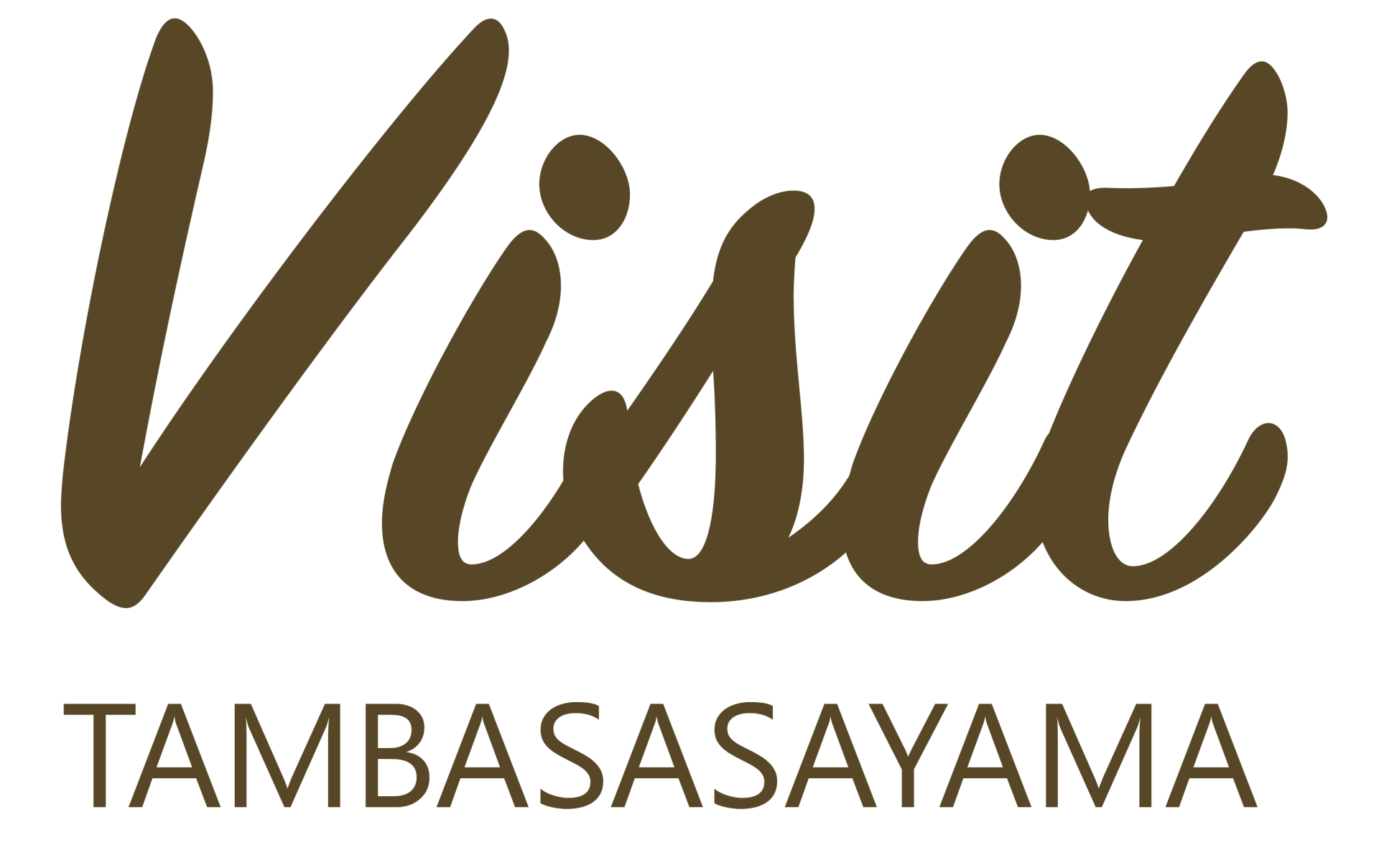Roofs in Tamba Sasayama 3: Village Houses

We live in an area with an ancient history. Recently they even found Yayoi (hundreds of years BC) artifacts when putting in a new road, along with historic artifacts that are more recent. Of course there are no buildings left that are even close to being that old, yet I find a lot of enjoyment in the old ones that do remain. As far as I can tell, the oldest remaining residential buildings are about 200 years old.
I particularly enjoy the old farm house above with its powerful roof and natural dirt walls. When we first moved into this area over 30 years ago, there were three or four houses with uncovered thatched roofs. Now the only thatched roofs remaining are covered in metal sheets, like ours, which is covered in copper. (See my previous blog article.)
Modern House with Traditional Roofs

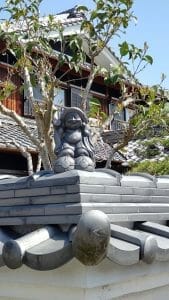
A few people still build traditional houses with ceramic tile roofs, such as the one shown above. The tiles last up to 50 or 60 years, and this place was re-roofed a number of years ago, at which time they had the Shikkui plaster walls redone too. On the roof of the wall stands Daikokuten, one of the Seven Gods of Good Fortune in Japan (which are derivative of mythological gods in India).
A Covered Thatched Roof
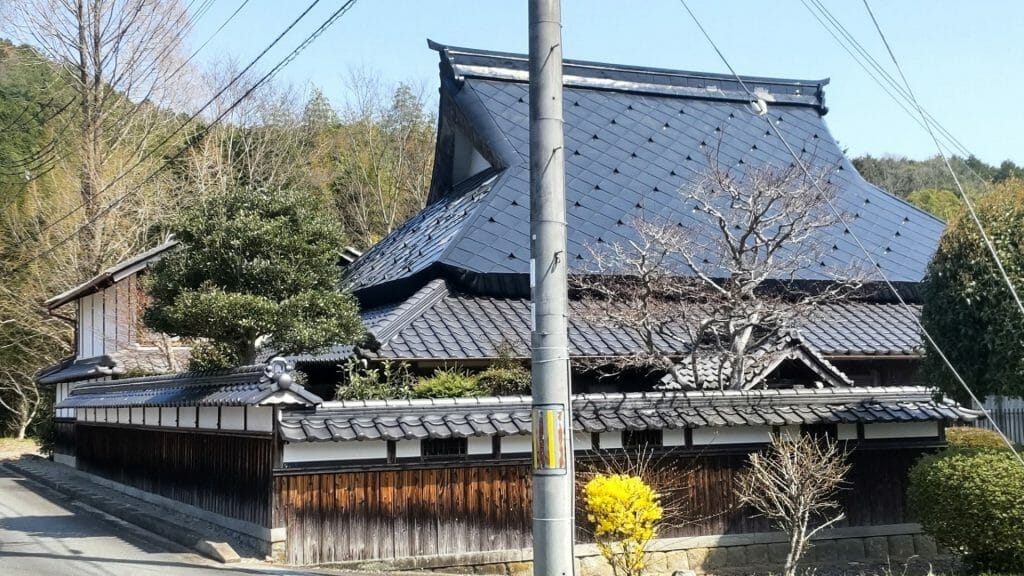
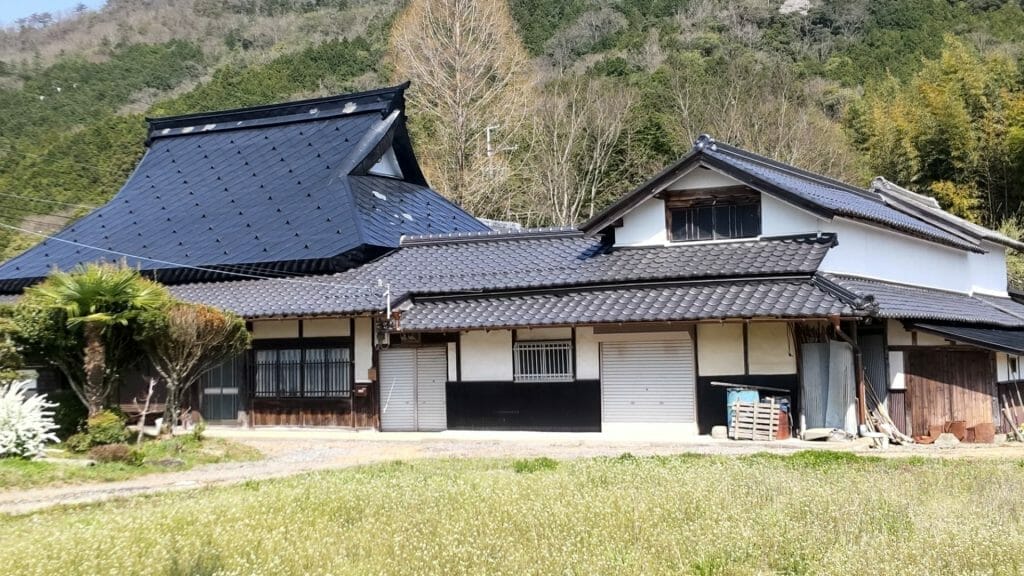 This house is about the same age as ours, estimated to be somewhere around 160 years old. The thatch has been covered with painted diamond-shape metal sheets. The little triangles on the roof are to keep the snow from sliding off all at once. This house has been well kept up over the time we’ve lived in the area, but unfortunately the lady who lived there has moved to a care facility due to her age (closing in on 100), which makes me concerned because empty houses generally deteriorate quickly, as so many have in our area.
This house is about the same age as ours, estimated to be somewhere around 160 years old. The thatch has been covered with painted diamond-shape metal sheets. The little triangles on the roof are to keep the snow from sliding off all at once. This house has been well kept up over the time we’ve lived in the area, but unfortunately the lady who lived there has moved to a care facility due to her age (closing in on 100), which makes me concerned because empty houses generally deteriorate quickly, as so many have in our area.
All Sorts of Roofs

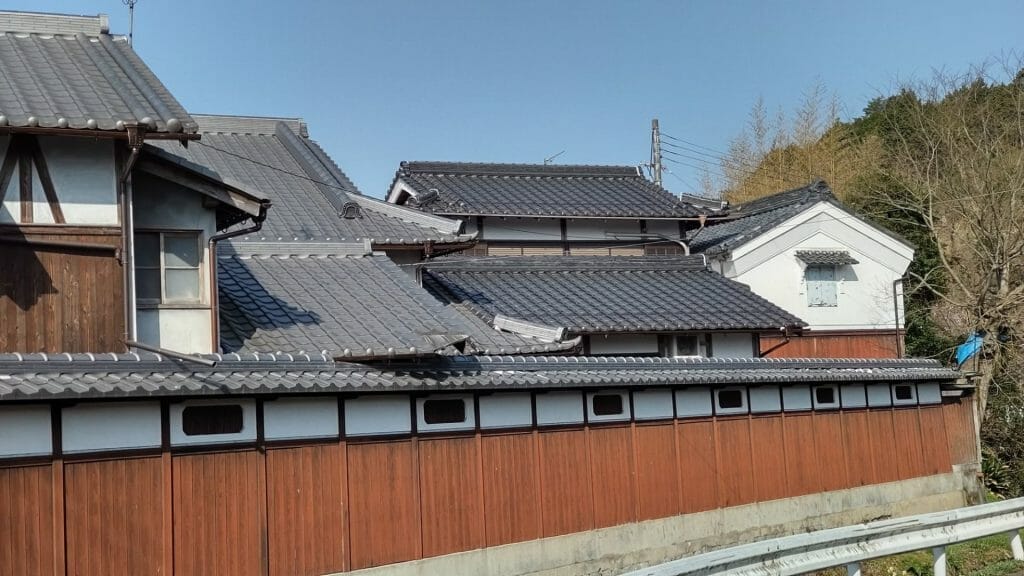

This is an incredible complex (a private home), but unfortunately I’ve never been in to see the house and gardens. I love the wall and trees—and peaking through the wall to catch glimpses of the garden—and the many roofs that intersect at various angles. The whitest building is a storage building, and even the window in it gets a roof.
Variety

 Even with the limited traveling I’ve done in Japan I’ve noticed a very distinct difference in building and roofing styles depending on the region. And even within one region there is a lot of variation. Both of the above homes are reasonably new, but are very different in nature. Yet both are derivative of traditional roofs. I love the way the sunlight accents the ridges of the tiles and the different levels of the roofs, particularly in the morning and evening light.
Even with the limited traveling I’ve done in Japan I’ve noticed a very distinct difference in building and roofing styles depending on the region. And even within one region there is a lot of variation. Both of the above homes are reasonably new, but are very different in nature. Yet both are derivative of traditional roofs. I love the way the sunlight accents the ridges of the tiles and the different levels of the roofs, particularly in the morning and evening light.
Well-kept Farm House Roofs

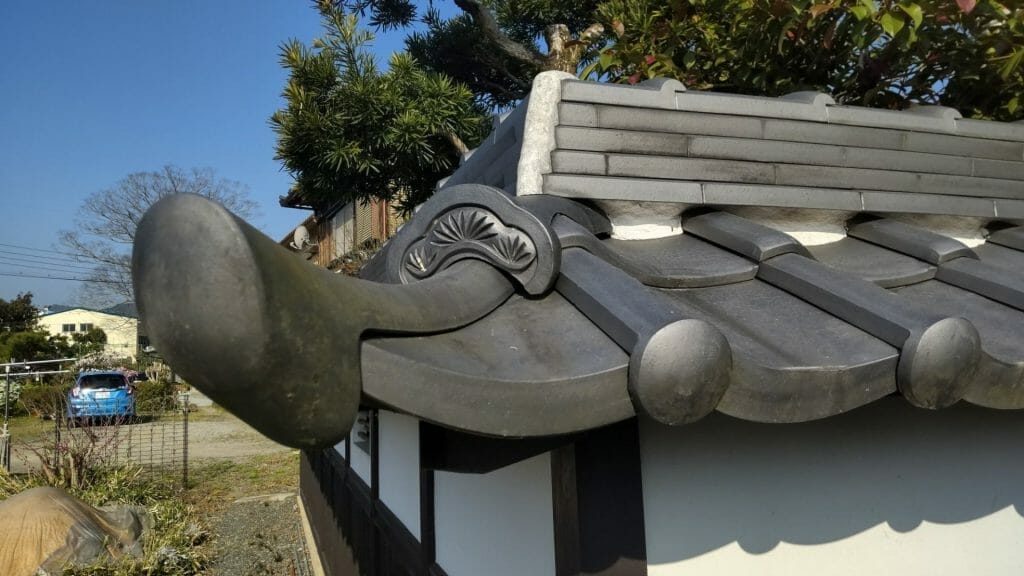
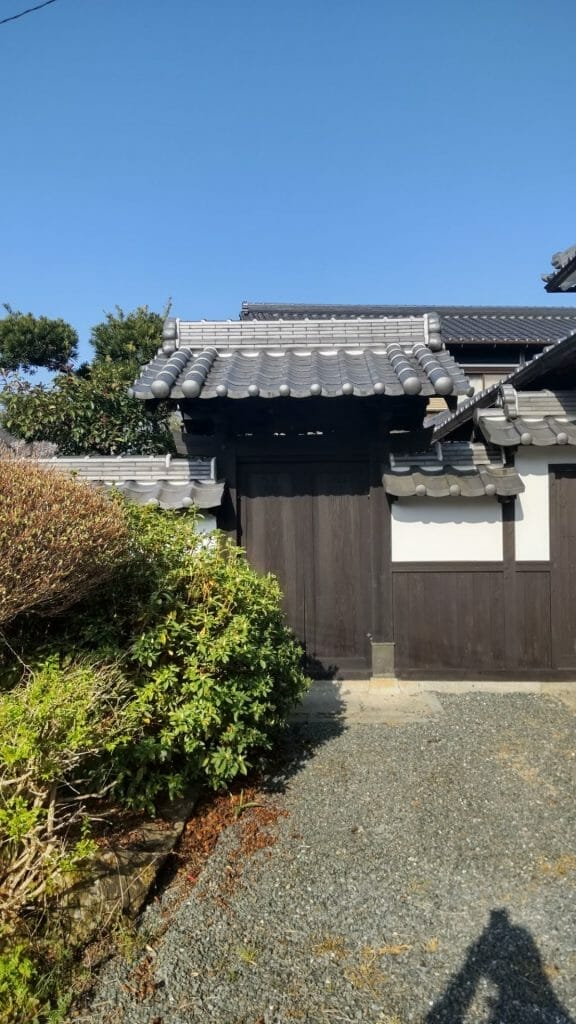
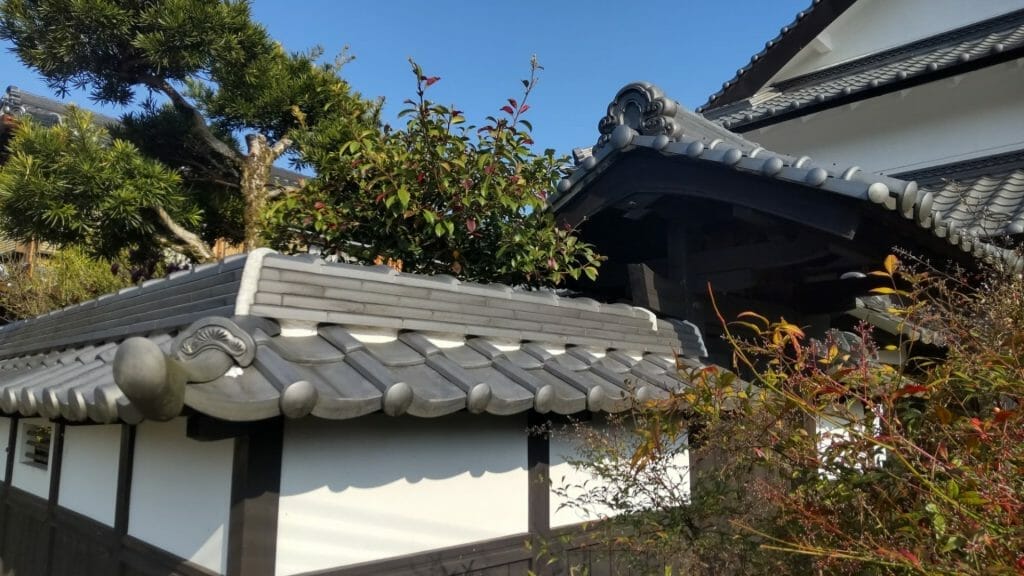
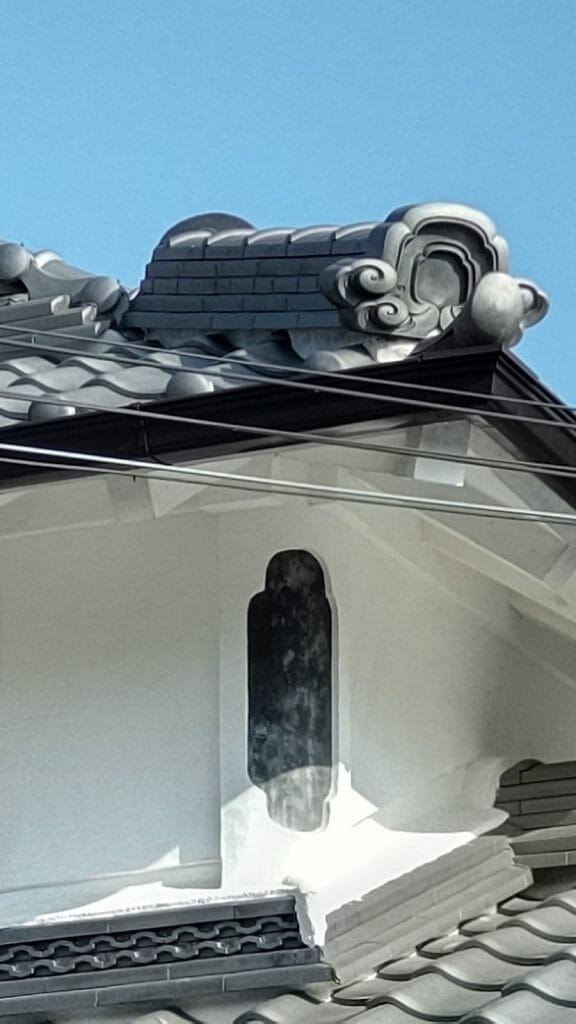
The above house belongs to a farmer that lives in the next village. He has been very helpful in teaching us to raise some of the more difficult crops here, such as black soybeans and a local type of Japanese yam (yamanoimo). I love his house, particularly because he always keeps it up so well. A few years ago he had a lot of work done on it, so it is in great shape and will last many decades to come if maintenance is continued.
Roof Decorations
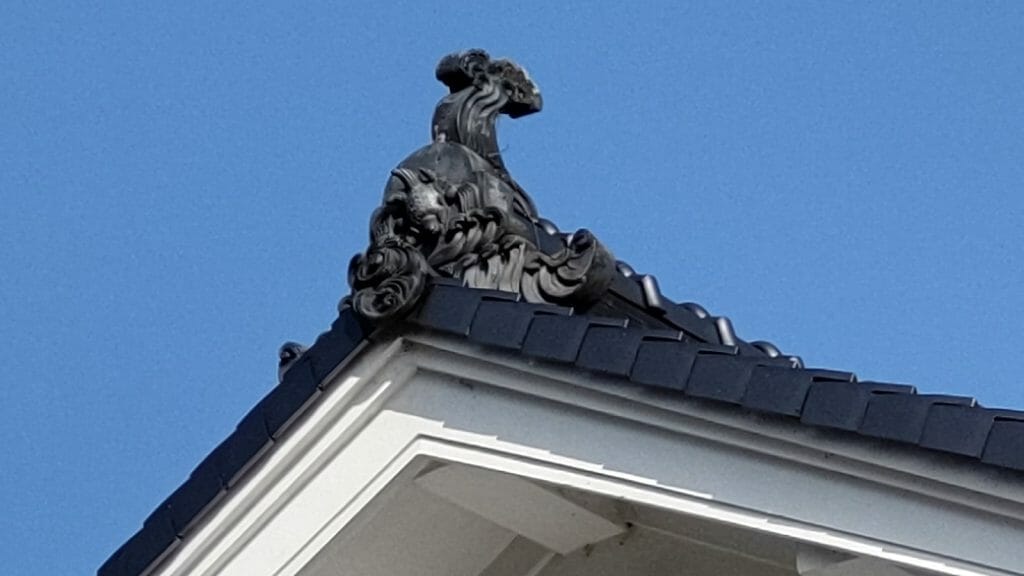
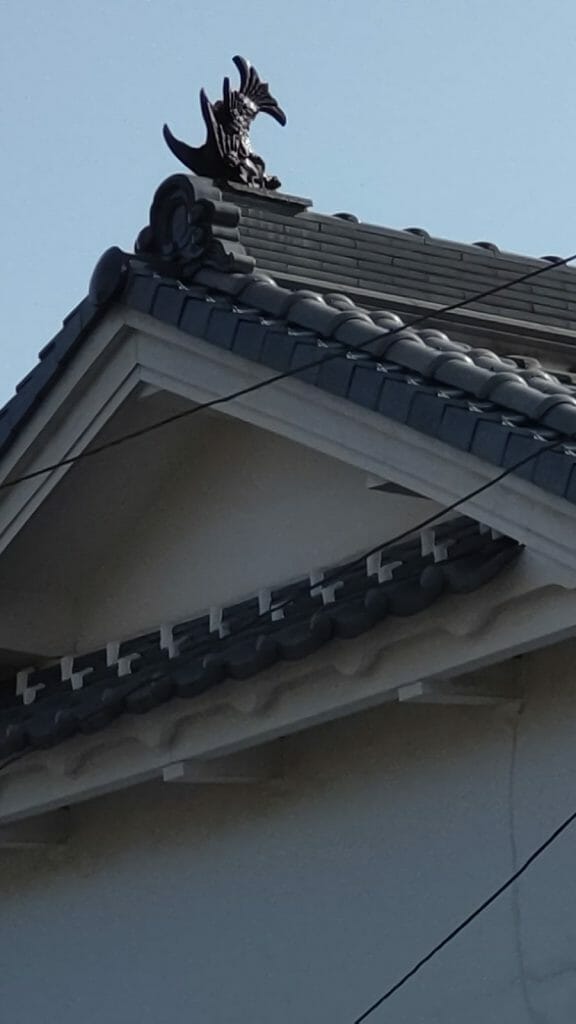

You can find all sorts of things on roofs, as shown in the above photos, which show a Shachi (see information in Wikipedia), a turtle, and even what I assume is the face of Ebisu, the god of success in business, among other things. Most of these have something to do with protecting the house. For example, the mythical Shachi is said to be able to make it rain, i.e., it protects the house from fire. The character for water and wave patterns also provide protection from fire.
Emblems

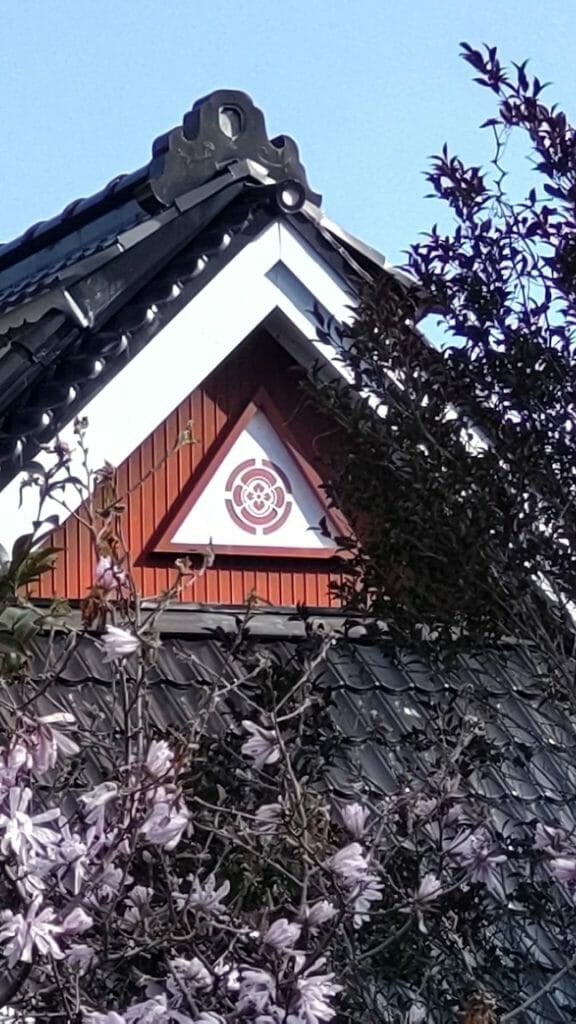

In many areas of Japan you’ll find the family crest, the character for water, or other decorative medallions in the gable of the roof. They are not as common in our area for a reason I’ve not yet been able to discover (possibly a symbol of restraint). There are a few, and above are two houses with the family crest and one house with the character that means congratulations or long life.
Awnings
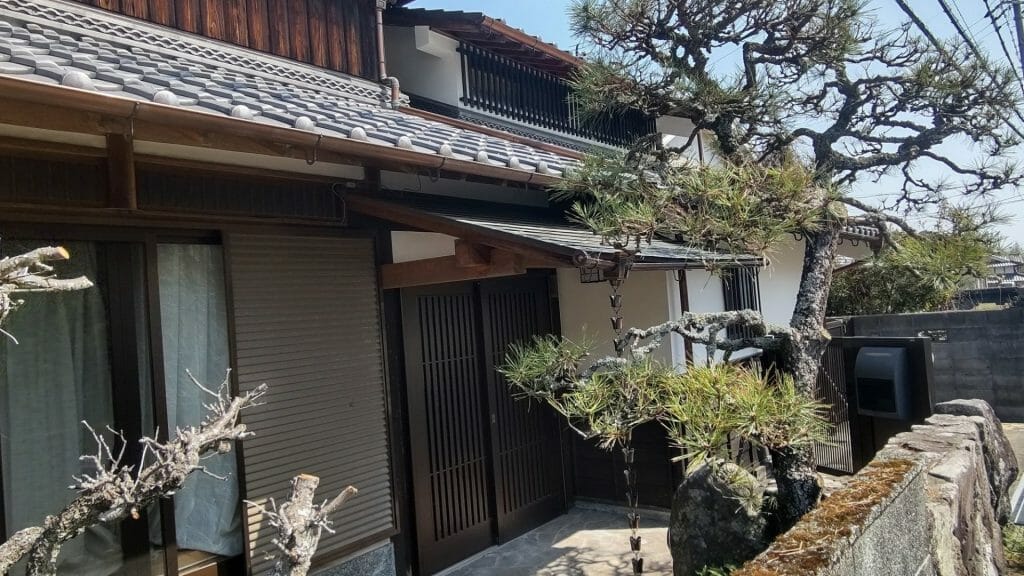
Even with all the layers of roofs in traditional houses, they often add an awning over the main entrance way as well, such as the one shown above. These are often copper roofs instead of ceramic tiles, which is another way to introduce variety into the architecture, and Japanese architecture loves variety, particularly architecture related to the tea ceremony.
All Sorts of Colors
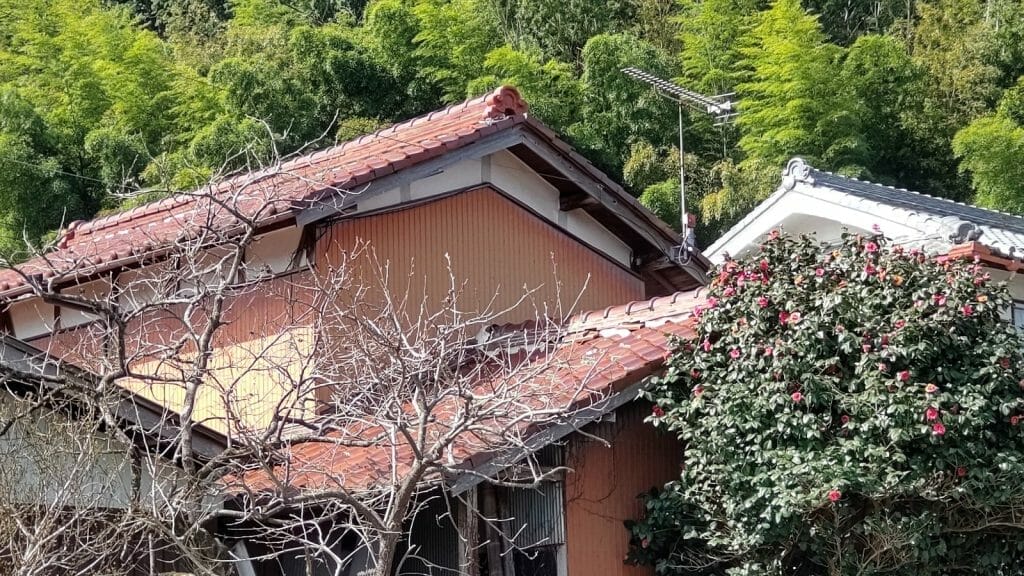


In different areas of Japan you’ll see different colors of roofing tiles. These are sometimes more than just decorative, e.g., some tiles are made to withstand colder winter or hotter summers. The red, blue, and green roofs shown above are all within easy walking distance of our house.
History in Front of Your Eyes
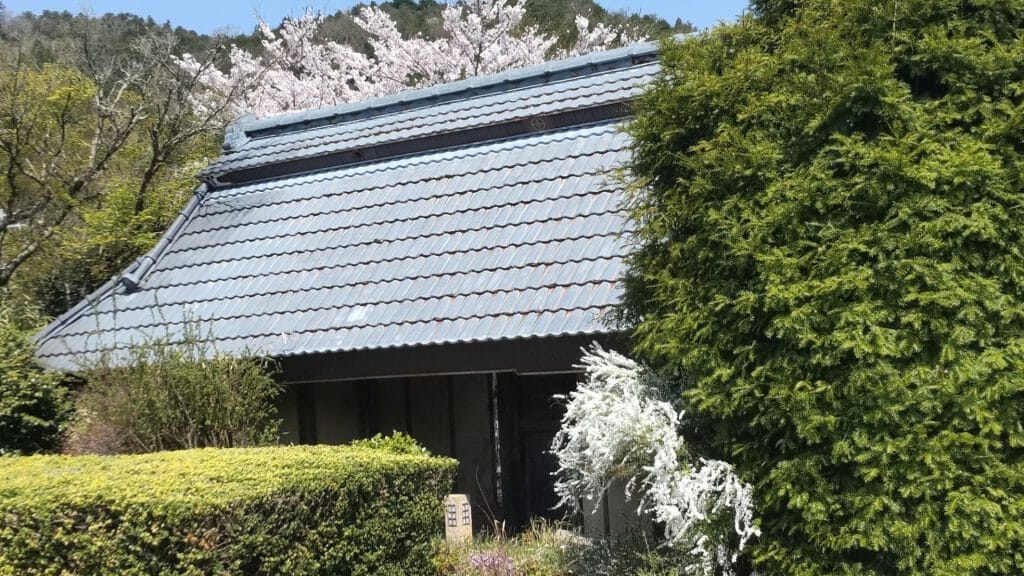

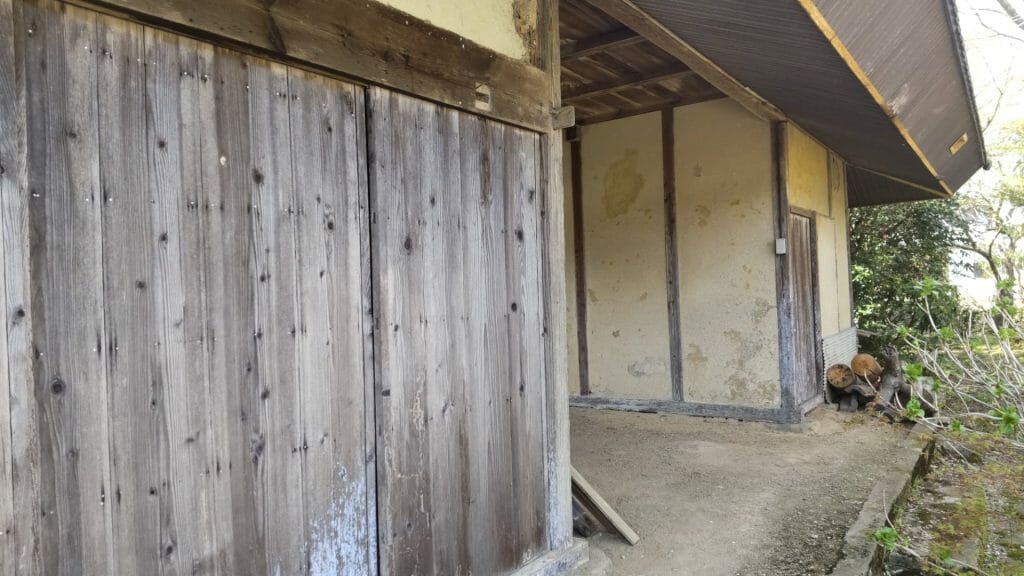

The house next to ours (separated by a couple of fields) is straight out of Japanese history. Hatano Hideharu ruled the area that is now Tamba Sasayama City until Toyotomi Hideyoshi defeated him and went on to unify Japan. There are all sort of legends and theories about the history of that time, but it’s said that Hideharu’s descendants resettle to our valley when he was defeated and died (or was executed). His grave site is in the mountains near the house. We believe our house was related to the Hatano clan in some way because of the proximity and similarity of the houses in structure and age. The front of the two buildings in the above photos is a Nagaya-mon gateway (equipped with rooms, possibly for a gatekeeper) and is estimated to be over 200 years old. You can see the family crest both at the end of the Nagaya-mon and in the gable of the main house. In one of the detail photos you can see the bamboo and thatch structure of the roof.
